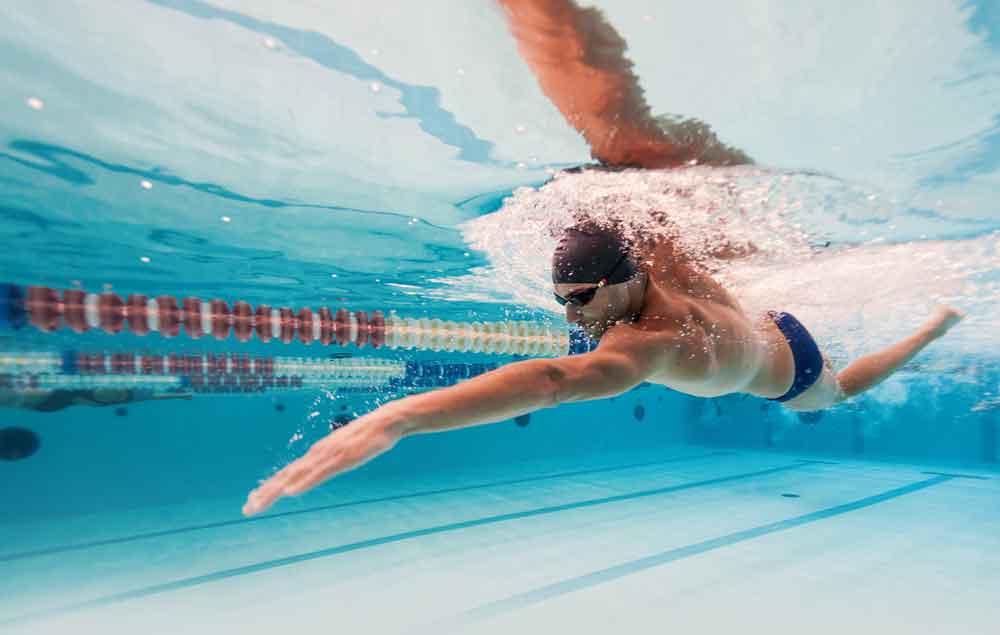3 Things Every New Swimmer Needs to Know

Photo: Shutterstock.com
Q. Do I really have to do flip turns?
A. Some athletes worry that flip turns are “cheating,” because you’re getting an extra push with each lap.
In fact, the opposite is true. “Lots of people take two to three breaths at the wall when they do an open turn,” explains Matt Ison, head triathlon coach at University of California, Santa Barbara. “But you don’t get to stop and take extra breaths every 25 yards in open water.”
Flip turns help you learn to control your breathing in the unpredictable wildness of the swim start. And they teach you to train yourself to maintain your pace, as you’ll do in your race. Swear you can’t? Check out our Fearless Flip Turn Guide below.
RELATED: The Top 5 Reasons Why Triathletes Flip Turn
Q. Can’t I just swim race-distance every practice?
A. Not if you want your swims to get better. “When you swim a continuous set, your stroke breaks down as you get tired,” says Ison, who’s also a Carmichael Training Systems expert coach. Maybe your strokes get shorter, or your hips sink, or you fall into your favorite bad habits. “When you take intermittent rest—even 10 or 15 seconds after a 100 or 200—you reset, so when you push off the wall, you’ll have a better stroke again for a period of time before you break down again.
The idea in all of training is to do what we’re doing well instead of just going through the motions.” You also want to train the swim just like you do the other sports, working at, above, and below your threshold at various times.
RELATED: 3 Swim Workouts for Beginner Triathletes
Q. How important is it to practice breathing on both sides?
A. It’s not a bad idea when you’re starting out. You’ll be comfortable no matter which way the waves are rolling or the sun is shining—it’s a confidence boost to know you can handle whatever the course throws at you. However, the surprise answer is that some coaches admit it’s not essential. “Many fast swimmers only breathe to one side,”
says Katya Meyers, a former pro triathlete who’s now an endurance coach in San Diego. “Most people are naturally dominant on one side, and trying to breathe to the other side can break down your stroke or slow you down, so the net effect isn’t positive,” she says. “And honestly, I’ve never been in a race where I had to breathe to the opposite side.”
RELATED: Why (And How) to Learn to Bilateral Breath
 Fearless Flip Turn Guide
Fearless Flip Turn Guide
By Matt Ison
1. Start in the middle
Start by practicing turns in the middle of the pool so you can get the flipping motion down. (Bonus: Having to start without a wall is also good prep for an in-water race start.)
2. Do a perfect front flip
Tuck your chin and do a somersault as if there’s a rod at waist level.
3. Stop when you’re upside down
Finish your somersault so you’re looking up at the ceiling or sky. The feeling of ending up on your back can feel weird at first, so just practice that; don’t try to get anywhere. Just flip and streamline. Important: Exhale at a rate that keeps water out of your nose and mouth but won’t leave you gasping for air by the time you finish the turn.
4. Approach the wall
As you get more adept at the first two steps, try flip turns at the wall. You’ll still want to come out of the turn on your back, and then flip over to your front as you glide away from the wall.